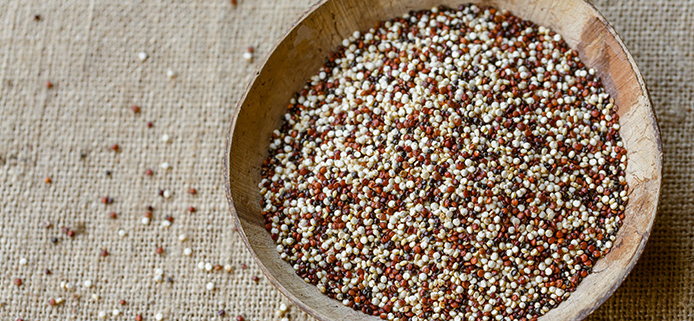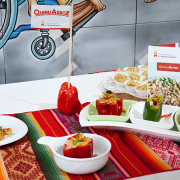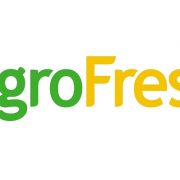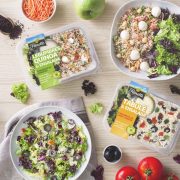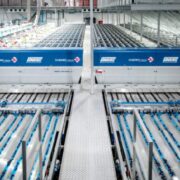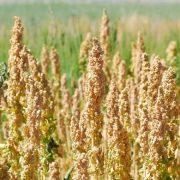Quinoa: the food of the future surface in Chile wins
Quinoa crop is being appreciated worldwide thanks to its qualities for improving nutrition and food security. Quinoa is considered the food of the future, quinoa opens a great opportunity for rural communities in the region of Coquimbo (Chile).
Not many know this, but the quinoa, quinoa or kingua contains much of the nutrients, vitamins, minerals, oils and essential amino acids that the body requires. Moreover, it is a species that has a high capacity to tolerate conditions of water and salt stress, attributes highly valued by farmers. Therefore, this grain begins to show surprising figures in most of the planet, especially on local economies. Chile is no exception, and therefore INIA was responsible for improving and promoting its production in different areas where the Coquimbo region occupies a leading place.
From regeneration activities present in the collections of seeds from INIA, located in Vicuña bank, a program of selection and breeding of quinoa began. This program aims to develop high-yield potential genotypes adapted to different areas of the country, tolerant to pests and meet the quality requirements of the domestic and international markets. Currently, the Bank Vicuña Foundation has a collection of 203 accessions of quinoa collected throughout Chile. It also keeps 192 lines of this Andean grain, which are being evaluated in the Regional Research Center INIA in La Serena Intihuasi order to identify parents to develop new varieties of quinoa.
In this regard, the national director of INIA, Dr. Julio Kalazich emphasizes that “the importance of advancing the development of proprietary varieties and the production of certified seed, gives security to the country and allows their progress as who manages genetics, manages the food market, “said the authority.
For many farmers, entrepreneurs and farmers, quinoa has been a trial and error learning. Carlos Küpfer, a farmer from the region of Coquimbo, is ambitious in trying to develop the complete cycle of the quinoa from cultivation to final product entrepreneur. “We are interested in traceability and development of organic products, without certification, as the crop allows it and the market demands it,” explains Küpfer and delivers valuable information on the production of quinoa from which we must focus, as it is practically all we can cultivate due to lack of water, “he says.
Overall, the market for quinoa is in a unique position to develop this crop competitively position. The growth of global demand for quinoa has been variable, it increased approximately an average annual rate of 12% in the last ten years, but with variations of 167% over the same period. 80% of world production is performed by Bolivia, Peru and Ecuador. Regarding the main importers of quinoa, they are the United States with a demand of 53%, Canada with 15% and France with 8% of the overall import volume.
In Chile a production of 1,020 tons per year, which are grown in an area of approximately 1,700 hectares with an average yield of 0.6 t / ha is estimated. The region is the main producer of Tarapaca, with 95% of national production, while the Coquimbo region would not exceed 0.5%, despite existing good conditions for this crop. As in most countries, much of the production is carried out by individuals or small producers, for domestic and export trade. With regard to import and export data, Chile imported 225 tons of quinoa in 2012, mainly from Bolivia and Peru. It should be noted that since 2008 not passed the 60 tons per year, which shows a significant increase in domestic consumption.
The national director of INIA, Dr. Julio Kalazich not hesitate to describe the quinoa as a strategic food. “Against a backdrop of increasing demand for food and in a society that is looking for healthier foods, quinoa is a product that we know more and strengthen it in all areas. Do not forget that FAO celebrated the International Year of Quinoa in 2013, “he says.
Attributes quinoa
The nutritional characteristics of quinoa are superior to other plant, since it is a complete food, that has all the essential amino acids required by humans (leucine, isoleucine, lysine, methionine, phenylalanine, threonine, tryptophan and valine ). Quinoa grain contains between 11% and 20% of high quality protein, which are above cereals such as rice (7.6%), barley (10.8%), corn (10.2%) and wheat (14.2%); and it makes it comparable to milk as a protein source.
Quinoa has significant amounts of vitamin B complex and minerals among presents contained lithium, which could help people with depression. It also presents plenty of calcium that is easily absorbed by the body, due to the simultaneous presence of zinc, making it highly recommended to avoid decalcification and osteoporosis. Compared with cereals, quinoa has greater amount of phosphorus, potassium, magnesium, iron and calcium, but low calorie content of 365 kcal / 100g on average.
Source: INIA




